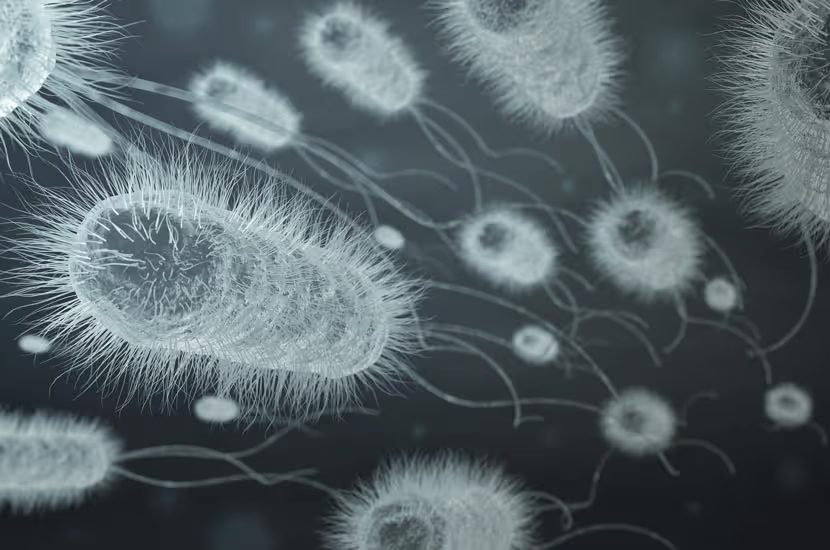Harmful pathogens you don’t want in your commercial kitchen

Pathogenic microorganisms can contaminate food ingredients and cause outbreaks of foodborne or infectious diseases. A high proportion of outbreaks originate from meals prepared in unclean commercial kitchens.
Poultry has been identified as a common source of infection for people in restaurant kitchens. This is likely because fresh, raw chickens are commonly contaminated with Campylobacter and/or Salmonella. In the UK, it’s a nationwide problem as the recent salmonella scare forced major retailers including Tesco, Pret â Manger and Marks & Spencer to remove products from their shelves.

However, it’s not only poultry that can be a source of contamination, other meats such as beef and pork can also be contaminated with these pathogens. There are a variety of harmful bacteria that can be found in commercial kitchens.
Suppose you are a business providing food directly to consumers, such as restaurants, pubs, cafés, takeaways, hotels, hospitals, schools, prisons, and event caterers. In that case, you are legally obliged to ensure that the food you serve is safe to eat.
It would help if you educated yourself about types of pathogens, spot the signs of contamination and, most importantly, how to prevent it.
Types of Pathogens in Commercial Kitchens
The first step in preventing foodborne illness is understanding which pathogens are most commonly associated with contaminated foods. The four primary pathogens that can contaminate food are viruses, bacteria, parasites, and toxins.
Virus
Viruses are the smallest of the four and can only be seen through a microscope. They are classified into two groups; waterborne and foodborne.
Waterborne viruses are found in contaminated water and can contaminate the food washed or prepared using contaminated water. The most common waterborne virus is Norovirus, the most common cause of viral gastroenteritis (stomach flu).
Foodborne viruses are found in contaminated food and can cause illness if the food is not cooked correctly. The most common foodborne virus is Hepatitis A.

Bacteria
Bacteria are single-celled organisms that can be either helpful or harmful. Helpful bacteria are used to make cheese and yoghourt, while harmful bacteria can cause food poisoning. There are two main types of harmful bacteria; pathogenic and spoilage.
Pathogenic bacteria are the type that causes food poisoning or bacterial infections, while spoilage bacteria make food go bad.
Here are the most common bacteria found in commercial kitchens and their associated foodborne illness:
Listeria monocytogenes
Listeria monocytogenes is a bacteria that can cause food poisoning. Symptoms include fever, muscle aches, and diarrhoea. It can be found in contaminated food, such as unpasteurised dairy products, deli meats, and smoked seafood.
Salmonella
Salmonella is a bacteria that can cause intestinal infections. Symptoms include diarrhoea, fever, and abdominal cramps. It can be found in contaminated food, such as raw eggs, poultry, and meat.
E. Coli
E. coli is a bacteria that can cause urinary tract infections. Symptoms include diarrhoea, fever, and abdominal cramps. It can be found in contaminated food, such as unpasteurised dairy products and raw meat.

Staphylococcus
Staphylococcus aureus is a bacteria that can cause skin infections. Symptoms include fever, muscle aches, and boils. It can be found on the skin or in contaminated food, such as meat and poultry.
Parasites
Parasites are organisms that live off of other organisms. The most common type of foodborne parasites is protozoa, single-celled organisms. The most common type of protozoa is Giardia, which can cause severe diarrhoea.
Toxins
Toxins are poisonous substances that are produced by bacteria. The most common type of foodborne toxin is botulism, which is caused by the bacterium Clostridium botulinum. Botulism can cause paralysis and even death if ingested.

Preventing Pathogen Contamination in Commercial Kitchens
The best way to prevent pathogen contamination is to practice good hygiene and keep your kitchen clean. Here are some tips to help you avert pathogen contamination in your commercial kitchen:
- Wash your hands often and thoroughly, using soap and water, after handling food, garbage, or the restroom.
- Wash cutting boards, knives, and other utensils after each use.
- Use hot, soapy water to clean countertops and other surfaces.
- Regularly clean and disinfect all food contact surfaces, such as cutting boards, knives, utensils, and countertops.
- Use separate cutting boards for raw meat, poultry, and seafood.
- Do not allow raw meat, poultry, or seafood to come into contact with ready-to-eat food.
- Cook food to the proper temperature to kill bacteria.
- Chill food promptly and properly.
- Avoid cross-contamination by keeping raw meat, poultry, and seafood separate from other food.
- Do not work with food if you are sick.
- Be sure to clean up any spills immediately.

Key Takeaway
If you suspect that your kitchen is contaminated with pathogens, contact a professional cleaning company to have it cleaned and disinfected. A professional cleaning company like us will use specialised equipment and chemicals to clean and disinfect your kitchen. We shall also help you develop a plan to prevent pathogen contamination in your kitchen.
As a commercial kitchen owner or someone in the food business, it is important to periodically ask for deep cleaning to help prevent pathogen contamination in your kitchen. A deep cleaning service will involve a thorough cleaning and disinfecting of all surfaces, including hard to reach areas. Deep cleanings should be done at least once a year, but more often if your kitchen is used frequently.
If you have any questions or would like to schedule a restaurant kitchen deep clean, please get in touch with us, and one of our wonderful customer service team members will be happy to assist you.


.avif)